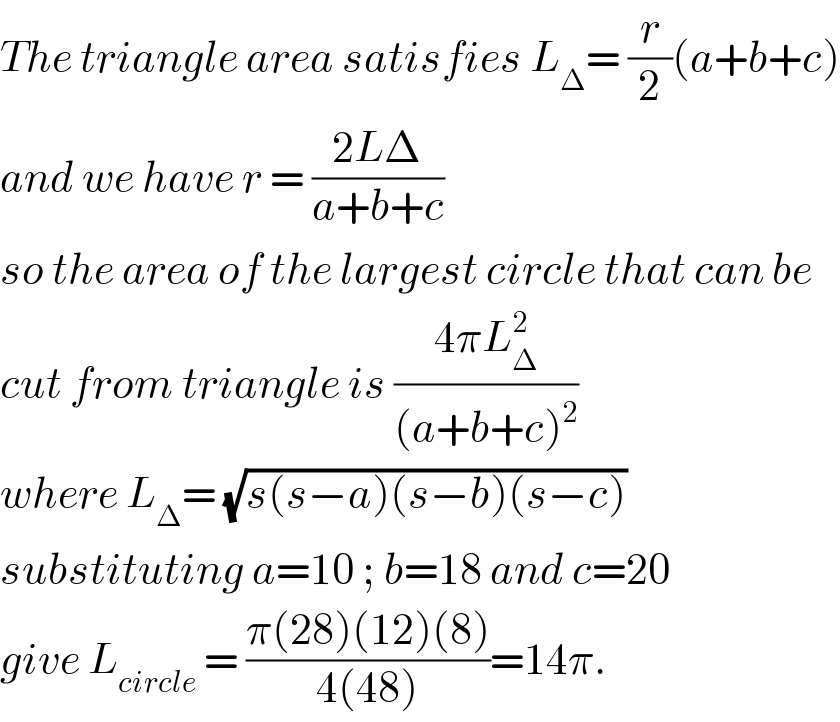Question Number 124291 by bramlexs22 last updated on 02/Dec/20

Answered by liberty last updated on 02/Dec/20

$${The}\:{triangle}\:{area}\:{satisfies}\:{L}_{\Delta} =\:\frac{{r}}{\mathrm{2}}\left({a}+{b}+{c}\right) \\ $$$${and}\:{we}\:{have}\:{r}\:=\:\frac{\mathrm{2}{L}\Delta}{{a}+{b}+{c}} \\ $$$${so}\:{the}\:{area}\:{of}\:{the}\:{largest}\:{circle}\:{that}\:{can}\:{be} \\ $$$${cut}\:{from}\:{triangle}\:{is}\:\frac{\mathrm{4}\pi{L}_{\Delta} ^{\mathrm{2}} }{\left({a}+{b}+{c}\right)^{\mathrm{2}} } \\ $$$${where}\:{L}_{\Delta} =\:\sqrt{{s}\left({s}−{a}\right)\left({s}−{b}\right)\left({s}−{c}\right)}\: \\ $$$${substituting}\:{a}=\mathrm{10}\:;\:{b}=\mathrm{18}\:{and}\:{c}=\mathrm{20} \\ $$$${give}\:{L}_{{circle}} \:=\:\frac{\pi\left(\mathrm{28}\right)\left(\mathrm{12}\right)\left(\mathrm{8}\right)}{\mathrm{4}\left(\mathrm{48}\right)}=\mathrm{14}\pi. \\ $$
